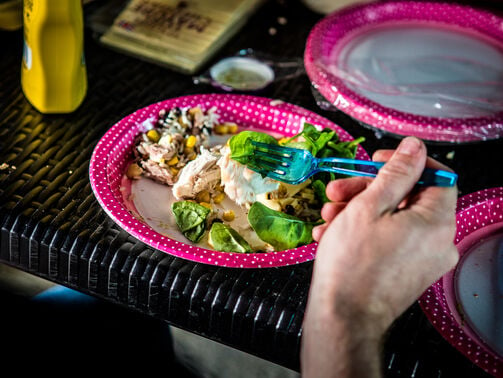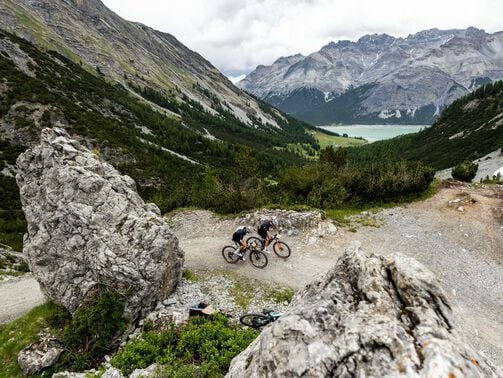How to clean your bike
Regular cleaning keeps your bike in good shape and working at its best. Here are some tips on how to do it right!

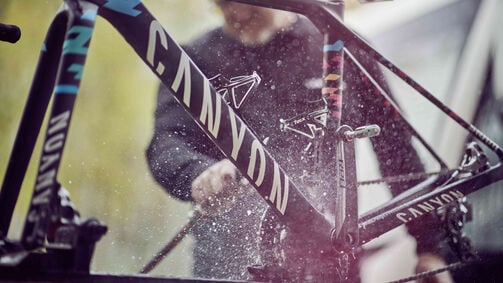
Is Regular Cleaning Really Necessary?
Yes! It might seem like a chore, but maintaining a regular cleaning and lubrication routine is the best way to maintain the lifespan of your cherished bike. Oily gunge and dirt build up over time and damage your bike's moving parts. Of course, a dirty, rusting bike with a clogged up cassette just doesn't ride as well. Your drivetrain seizes up, your brakes stick and your gear shift gets sluggish. In all respects, it's best to keep a clean ride for happy cycling.
How Often Do I Have to Clean my Bike?
The more often you clean your bike, the easier it is! Months or even years of caked-on mud and oily mess can be difficult to shift, so regular cleaning is a must.
If you're a commuter cyclist on a hybrid bike in dry conditions, once a week may be fine. If you ride a mountain bike or gravel bike across muddy terrain, you'll do well to clean it off after every ride. If this seems like a lot, it's still valuable just to give it a quick rinse and oil, but don't skimp on a regular deep clean as well. If you take a road bike for long rides at the weekend, your cleaning schedule should be determined by distance. Look at cleaning and lubricating your drivetrain about once every few hundred kilometres to keep it functioning well.
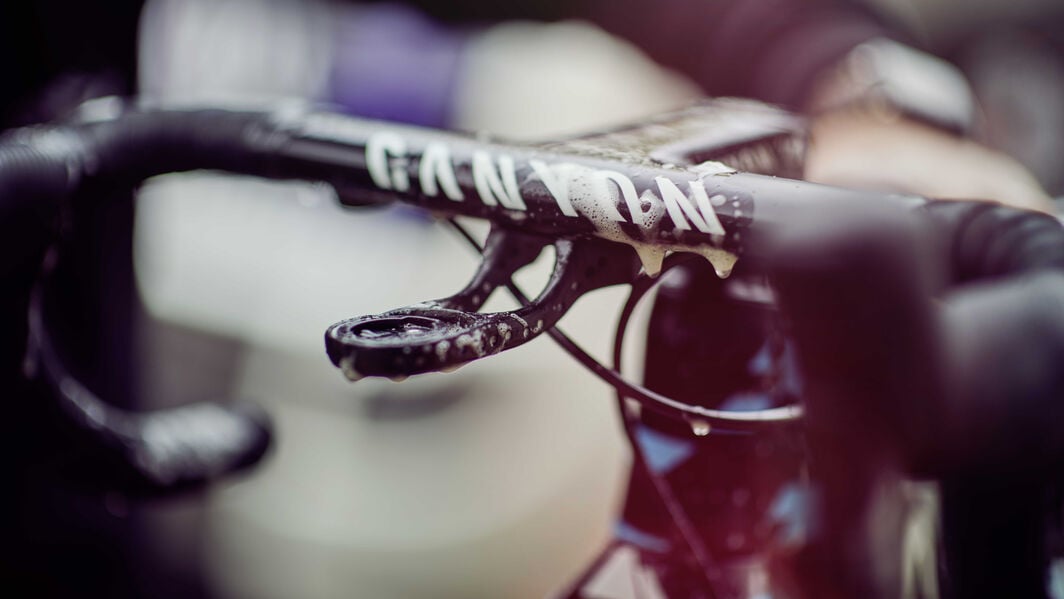
-
Bucket:if you have a hose, that's useful too.
-
Sponge or cloths:get a sponge that won't disintegrate and cloths that don't release fluff.
-
Brushes:you'll need a range of brushes of different stiffness and sizes.
-
Work stand:this makes it much simpler to clean the whole bike without having to rotate it. It's also invaluable for general maintenance.
-
Chain cleaning machine:your chain is one of the hardest-working parts on the bike (besides you of course!). To give your chain the respect it deserves and keep it at its best, this is a bit of kit that's worth investing in.
-
Water.
-
Detergent:washing-up liquid works, but specialist detergents can be more efficient.
-
Degreaser:this is pretty vital as you won't get the gunk off your chain without it. Citrus degreaser or specialist drivetrain cleaner is a must.
-
Lubricant:choose wet or dry lube depending on your preferred riding conditions.
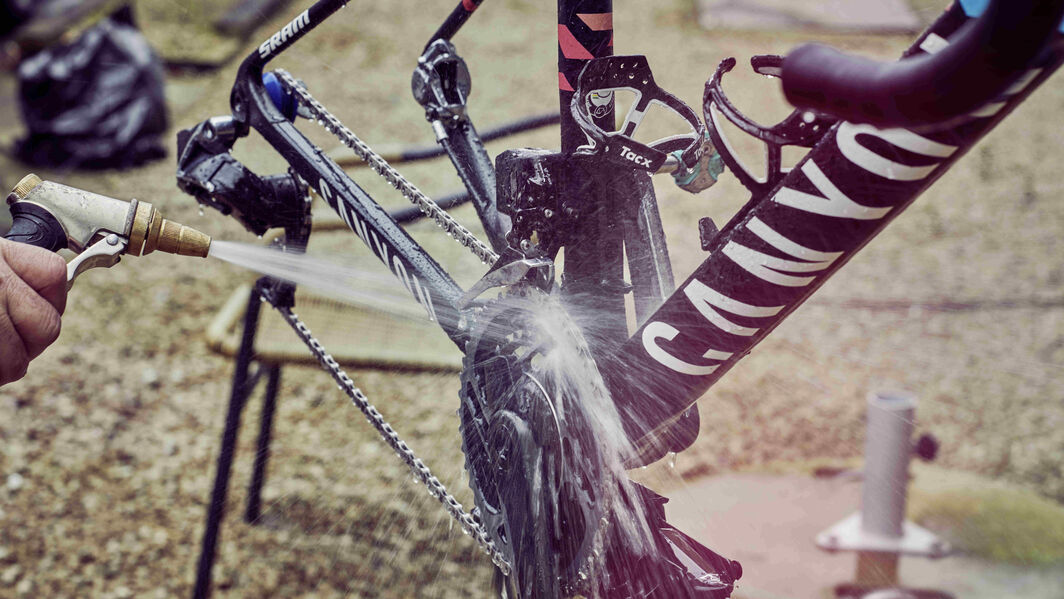
The Bike Cleaning Process
Now you're all set to begin cleaning, how should you proceed? As a preliminary, if your bike is freshly muddied from a dirt trail, a quick splash with your bucket to remove any loose dirt is a good idea. If you have a hose, this is even better. A warning though - high-pressure hoses are not recommended as they can force dirt into nooks and crannies that are then even harder to clean.
Now for the serious cleaning, it's best to start with the messiest part first: the drivetrain. This is where you'll need your degreaser. Apply degreaser liberally to all parts of your chainset and leave it for a few minutes to do its work. Then scrub into all the small crevices with a small firm brush. Rinse it off with clean water and repeat if necessary. A chain cleaning machine is excellent for this task, as it thoroughly cleans all the links of the chain without making a mess. However, you'll still need to scrub the derailleur and chain rings by hand.
A really important tip here: do not use your drivetrain brushes on the rest of your bike! These brushes will likely retain some greasiness, and you don't want that spread all over the frame and wheels, and certainly not your brake pads.
Once you've got the drivetrain done, the rest is pretty easy. It's best to start at the top. Gravity will drive the dirt downwards, so you'll want to clean the lower parts last. The wheels and frame can be cleaned quite easily using soapy water and your sponge, as well as some high-concentrate detergent for dirtier parts. You may choose to use a spray-on cleaner, which saves on scrubbing, but make sure you give it time to work before rinsing it off.
Pay special attention to the brakes. Give them a good scrub with a firm brush (but not your drivetrain brush). A sponge or cloth is fine for washing the frame. The wheels are a bit more intricate, so use a soft brush to clean around the hard-to-reach parts.
A note on electric bikes: the controls, motor and battery on these bikes are designed to be water-resistant, so you should be able to clean in the same way as road or mountain bikes. However, it is probably wise to avoid wetting these components too much. Again, a high-pressure hose is definitely a bad idea.
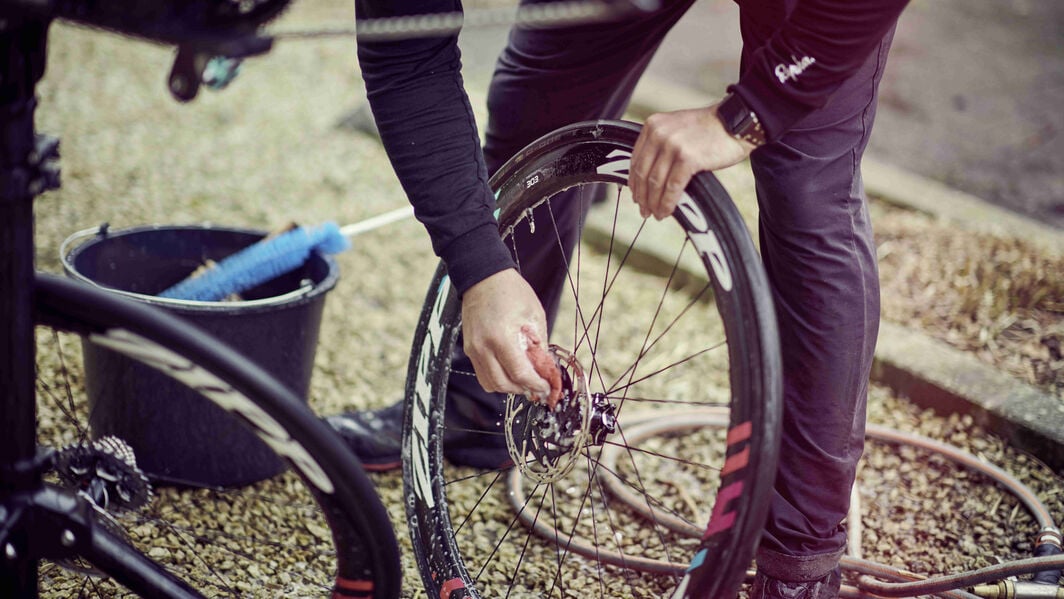
Finishing
When you're done with all the separate parts, give your bike a final rinse and leave it to dry thoroughly. When it's fully dry, apply lubricant to the chain and other moving parts, making sure you don't get any oil on your brake pads and rotors if you’re using disc brakes. Wipe off any excess once it's had time to soak through.
Done right and done regularly, cleaning a bike isn't difficult. With a few simple tools and some good cleaning products, you can keep your bike feeling new for every ride!
Did this article help?
Thank you for your feedback
